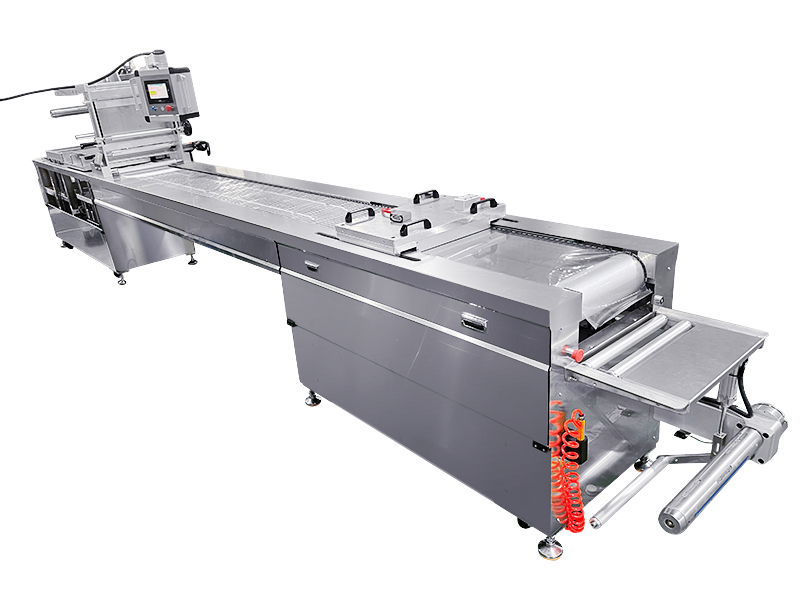Release Date:2024-06-20 23:09:10 Popularity:
With the continuous development of the global economy and the increasing diversification of consumer demand, the packaging industry is facing unprecedented challenges and opportunities. In order to meet market demand, improve production efficiency and product quality, packaging industry automation equipment is rapidly becoming popular and becoming an important trend in the development of the industry. This article will explore the main types, advantages, application areas and future development directions of packaging industry automation equipment.

Packaging industry automation equipment covers the entire process from the initial stage of product packaging to the final packaging, mainly including the following categories:
1. Filling equipment: used to put products such as liquids, particles or powders into containers. Common ones include liquid filling machines, powder filling machines and particle filling machines.
2. Sealing equipment: used to seal the packaging container of the filled product. Including heat sealing machines, vacuum sealing machines, aluminum foil sealing machines, etc.
3. Labeling equipment: used to stick labels on products or packaging. Including automatic labeling machines, thermal transfer machines, etc.
4. Packing equipment: used to put single or multiple products into outer packaging boxes. Including automatic packing machines, carton openers and carton sealing machines, etc.
5. Palletizing equipment: used to neatly stack packaged products on pallets. Including robot palletizers and automatic palletizing systems.

Advantages of automated equipment in the packaging industry
1. Improve production efficiency: Automated equipment can complete the packaging process continuously and at high speed, greatly improving production efficiency. Compared with traditional manual packaging, automated equipment can complete more workload in a shorter time.
2. Ensure product quality: Automated equipment has the characteristics of high precision and consistency, which can ensure the quality consistency of each packaging process and reduce errors and defects caused by human operation.
3. Reduce production costs: Although the initial investment of automated equipment is high, its high efficiency and low labor cost in long-term operation significantly reduce the overall production cost.
4. Improve safety: Automated equipment reduces the frequency and intensity of manual operation, reduces possible safety accidents during operation, and ensures the safety of workers.
5. Adapt to diverse needs: Modern automated equipment is highly flexible and can be quickly adjusted to meet the needs of different products and packaging forms to meet the diversified development trend of the market.

Automated equipment is widely used in the packaging industry, covering the following major areas:
1. Food and Beverage: In the food and beverage industry, automated packaging equipment is used for filling, sealing, labeling and packing to ensure the hygiene and safety of the products. For example, liquid filling machines are used for filling beverages, and automatic sealing machines are used for sealing food packaging.
2. Medicine and Health Care: The pharmaceutical industry has extremely high requirements for packaging quality and precision, and automated equipment plays an important role in the filling, labeling and packaging of medicines. For example, powder filling machines are used for the packaging of medicinal powders, and automatic labeling machines are used for the pasting of medicine bottle labels.
3. Chemicals and Pesticides: The packaging of chemical and pesticide products requires special safety measures, and automated equipment can ensure the safety and precision of the packaging process. For example, automatic filling machines are used for the filling of chemical liquids, and vacuum sealing machines are used for the sealing of pesticide packaging.
4. Daily Chemicals and Cosmetics: In the daily chemical and cosmetics industry, automated equipment is used for the packaging of various bottled, canned and bagged products to ensure the beauty and quality of the products. For example, paste filling machines are used for filling cosmetics, and automatic cartoning machines are used for packaging cosmetic sets.

Development direction of automation equipment in the packaging industry
1. Intelligence and digitalization: With the advancement of Industry 4.0, automation equipment in the packaging industry will become more intelligent and digital. By introducing the Internet of Things (IoT) and big data analysis, equipment can achieve intelligent monitoring, predictive maintenance and production optimization.
2. Flexibility and modularization: Future packaging automation equipment will be more flexible and modular, and can quickly adapt to the needs of different products and packaging forms. Modular design makes equipment upgrades and maintenance more convenient and improves equipment utilization.
3. Green environmental protection and energy saving: Environmental protection and energy saving are important directions for future development. Packaging automation equipment will adopt more environmentally friendly materials and energy-saving technologies to reduce energy consumption and environmental pollution, and promote the development of green packaging.
4. Human-machine collaboration and safety: Human-machine collaborative robots will be widely used in the packaging industry, combined with artificial intelligence technology to achieve more efficient and safer production operations. The equipment will ensure safety during human-machine collaboration through intelligent sensors and control systems.

Automation equipment in the packaging industry has significant advantages in improving production efficiency, ensuring product quality, and reducing production costs, and has become a key force in the development of the modern packaging industry. With the continuous advancement of technologies such as intelligence, digitization, flexibility, and green environmental protection, packaging automation equipment will continue to play an important role and lead the industry towards high efficiency, intelligence, and sustainable development. By introducing and optimizing automation equipment, companies can not only enhance their market competitiveness, but also better meet consumer needs and achieve sustainable development.